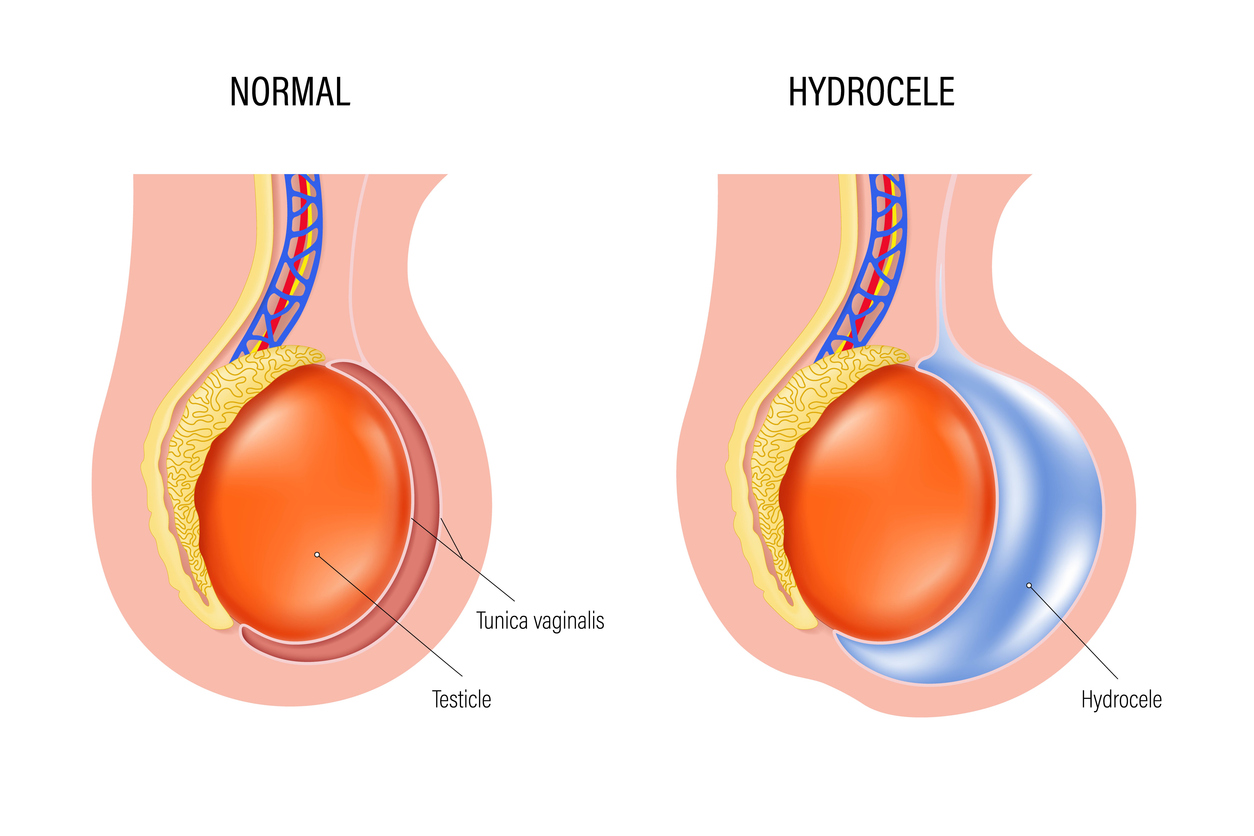What Is a Hydrocele?
A hydrocele is a fluid-filled sac that develops around one or both testicles, leading to painless swelling in the scrotum. It occurs when fluid accumulates in the tunica vaginalis, the protective membrane surrounding the testicle.
Hydroceles are common in newborns and often resolve on their own within the first year of life. In older males, hydroceles may result from injury, inflammation, infection, or underlying medical conditions.
Symptoms
The main symptom of a hydrocele is swelling in the scrotum, which may:
-
Be soft and painless
-
Fluctuate in size (e.g. smaller in the morning, larger in the evening)
-
Cause a feeling of heaviness or discomfort
-
Be more noticeable after activity or standing for long periods
In some cases, especially if infection is involved, there may be:
-
Redness or warmth
-
Pain or tenderness
-
Fever

Diagnosis
Hydroceles are typically diagnosed during a physical examination. Additional tests may include:
-
Transillumination: A light is shone through the scrotum; if the swelling glows, it’s likely filled with fluid.
-
Ultrasound: Confirms the presence of fluid and rules out other causes such as hernias, tumours, or varicoceles.
-
Urinalysis or blood tests: If infection is suspected.
Types of Hydroceles
-
Communicating Hydrocele: A congenital form where the connection between the abdominal cavity and scrotum remains open. Common in infants and can be associated with inguinal hernias.
-
Non-communicating Hydrocele: Fluid is trapped around the testicle with no connection to the abdomen. More common in older males.
Treatment Options
Treatment depends on age, cause, and severity.
In Infants:
-
Most cases resolve spontaneously within the first 1–2 years.
-
Observation is usually recommended unless the hydrocele is very large or persists.
In Adults:
-
Observation: If painless and not causing discomfort.
-
Surgical Repair (Hydrocelectomy): The most common treatment if the hydrocele is large, painful, or persists.
-
Aspiration and sclerotherapy: Used in non-surgical candidates, though recurrence is more likely.
When to See a Doctor
Seek medical advice if:
-
You notice painless swelling in the scrotum
-
There is sudden pain or redness
-
The swelling becomes large or uncomfortable
-
There are signs of infection (fever, tenderness, warmth)
